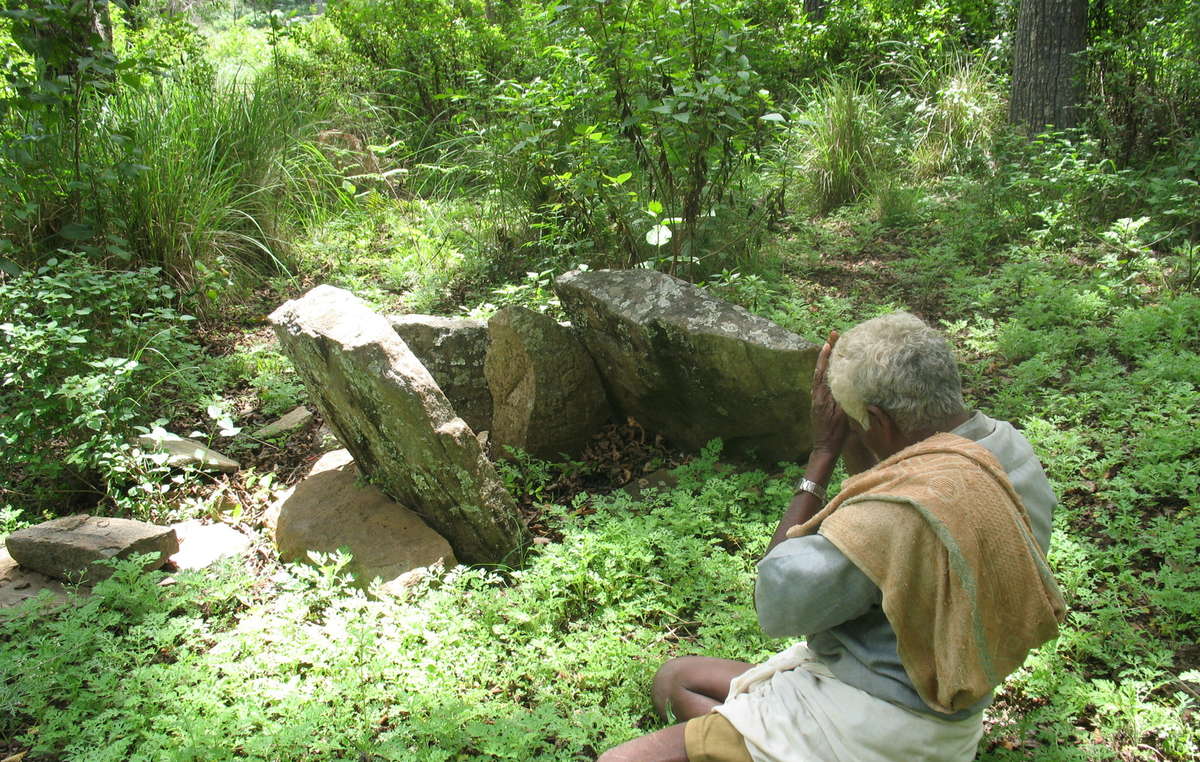
by DGR News Service | Jul 11, 2019 | Climate Change
Editor’s note: Anyone who is paying attention knows that global climate breakdown is accelerating faster than the worst IPCC predictions. Still, emissions continue to rise, setting records year-after-year. There is no evidence that governments, civil society, or corporations are able to address this in any meaningful way. In fact, all the evidence shows the opposite. Drastic times call for drastic measures. We at Deep Green Resistance call for “decisive ecological warfare” to shut down the global fossil fuel economy by any means necessary. We do not advocate this lightly. We fear this may be the only realistic means of stopping climate chaos.
Image via NASA/GISS
Climate Chaos Headlines
June 2019 Was Hottest Ever
“Last month was the hottest June ever recorded, the EU‘s satellite agency has announced.” — full story at The Independent
Antarctic Melting Accelerates
A swath of Antarctica’s sea ice larger than four times the size of France has melted since 2014, AFP reported Tuesday.
The rapid decline, revealed in a study of satellite data published by the Proceedings of the National Academy of Sciences, marks a stunning reversal for the South Pole: Between 1979 and 2014, its sea ice was actually expanding. Then, it lost 2.1 million square kilometers (approximately 810,815 square miles) in three years, falling from 12.8 million square kilometers (approximately 4.9 million square miles) to 10.7 million square kilometers (approximately 4.1 million square miles).
“It went from its 40-year high in 2014, all the way down in 2017 to its 40-year low,” study author and NASA Goddard Space Flight Center climatologist Claire Parkinson told AFP.
— Full story at EcoWatch
India Experiencing Record-Setting Heat
“India has increasingly suffered from extreme heat in recent years. 2018 was the country’s sixth hottest year on record, and 11 of its 15 warmest years have occurred since 2004, The Independent reported. The capital of New Delhi broke its all-time record Monday with a high of 48 degrees Celsius, according to The Times of India.”
— Full story at EcoWatch
France Records Hottest Temperature Ever in European heat wave
Large portions of Europe were hit by intense heat waves over the past week. Germany, Poland and the Czech Republic all experienced their hottest-ever temperatures for the month of June. France recorded its hottest day ever on Friday, reaching a high of 45.9 degrees Celsius (115 Fahrenheit) at the town of Gallargues-le-Montueux near Montpellier, in the southern Gard region, making it temporarily warmer than California’s notoriously hot Death Valley.
— Full story at Pressenza
Alaska Breaks All-Time High Temperature Records
“Alaska had its warmest March on record — in some places 20 degrees above normal. Once all the data is tabulated, it is likely to be the second-warmest June on record.”
— Full story at The New York Times

by Deep Green Resistance News Service | Mar 17, 2019 | Colonialism & Conquest
Featured image: The collusion between officials and poachers was exposed in India’s Down to Earth magazine. © Down to Earth
by Survival International
Park officials in India’s Rajaji Tiger Reserve colluded with poachers in the killing of endangered leopards, tigers and pangolin, according to an investigation by a senior wildlife officer.
The accused officials range from the park director to junior guards. WWF-India boasts that it trained “all Rajaji frontline staff in skills that were vital for protection,” including law-enforcement. It also provided vehicles, uniforms and essential anti-poaching equipment to the guards.
The investigation, reported in India’s Down to Earth magazine, found that not only were officials helping to hunt down and kill wildlife, they also beat and tortured a man named Amit – an innocent villager who was trying to stop the poaching.
Officials are reported to have arrested Amit under false charges, resulting in him being detained for up to a month. He was also beaten and given electric shocks by a wildlife warden and two range officers.
These revelations of serious human rights abuses by guards trained and supported by WWF follow the recent Buzzfeed exposés that WWF funds guards who kill and torture people.
The involvement of those supposed to protect wildlife in hunting is common. A UN report in 2016 confirmed that corrupt officials are at the heart of wildlife crime in many parts of the world, rather than tribal peoples who hunt to feed their families.
Stephen Corry, Survival International’s Director, said today: “Rangers who poach as well as violate human rights won’t surprise those environmentalists who’ve been speaking against fortress conservation for years. Corrupt rangers often collude with poachers, while tribal people, the best conservationists, bear the brunt of conservation abuses.”

by Deep Green Resistance News Service | Feb 23, 2019 | Colonialism & Conquest
Featured image: Many tribes, like some Chenchu, have already been evicted after their lands were turned into tiger reserves. Now millions more face eviction. © Survival International
by Survival International
India’s Supreme Court has ordered the eviction of up to 8 million tribal and other forest-dwelling people, in what campaigners have described as “an unprecedented disaster,” and “the biggest mass eviction in the name of conservation, ever.”
The ruling is in response to requests by Indian conservation groups to declare invalid the Forest Rights Act, which gives forest-dwelling people rights to their ancestral lands, including in protected areas. The groups had also demanded that where tribespeople had tried and failed to secure their rights under the Act, they should be evicted.
The groups reportedly include Wildlife First, Wildlife Trust of India, the Nature Conservation Society, the Tiger Research and Conservation Trust and the Bombay Natural History Society.
In an extraordinary move, the national government failed to appear in court to defend the tribespeople’s rights, and the Court therefore ruled in favor of the evictions, which it decreed should be completed by July 27.

A Soliga man worships at a sacred site, now inside a tiger reserve. © Atree/Survival
The order affects more than 1.1 million households, with experts estimating this could mean more than 8 million individuals will now be evicted – and the number is likely to rise, as some states have not provided details as to how many will be affected.
Survival International’s Director Stephen Corry said today: “This judgement is a death sentence for millions of tribal people in India, land theft on an epic scale, and a monumental injustice.
“It will lead to wholesale misery, impoverishment, disease and death, an urgent humanitarian crisis, and it will do nothing to save the forests which these tribespeople have protected for generations.
“Will the big conservation organizations like WWF and WCS condemn this ruling and pledge to fight it, or will they be complicit in the biggest mass eviction in the name of conservation, ever?”
by DGR News Service | Feb 16, 2019 | Climate Change
by Papillon
Today on Facebook I came across an article celebrating the fact that NASA has found that the earth has greened up over the past 20 years thanks to massive tree planting in China and India.
Surely not, I thought. So I googled the phrase “NASA says world greener” and found a slew of articles published over the past 24 hours all trumpeting the news. The first 20 or so all had variations on the same headline praising China and India’s tree planting. So it must be true, right?
Unfortunately no. This is a really good example of bad science reporting, spin and “greenwashing”.

Over the last two decades, the Earth has seen an increase in foliage around the planet, measured in average leaf area per year on plants and trees. Data from NASA satellites shows that China and India are leading the increase in greening on land. The effect stems mainly from ambitious tree planting programs in China and intensive agriculture in both countries.
Credits: NASA Earth Observatory
[Image and caption copied directly from the NASA Ames Research Centre article linked below]
Regrettably, even the NASA web page about the research – which was NOT conducted by NASA at all but merely used publicly available data from NASA’s satellites – is highly misleading. And it’s all in the spin. When you talk about “China and India leading the increase” and China’s “ambitious tree planting programs” as in NASA’s caption above, you can certainly see where the commonly reported headline comes from. While the NASA article isn’t technically incorrect, the wording is very misleading. Unless you have been trained to focus on the precise meaning of every single word (as scientists like me have), you are simply not going to pick it up. But it’s spin. Fake news. Greenwash. Given an aura of legitimacy by the NASA badge.
YES, it’s true, there have been massive tree plantings in China and, to a lesser extent, India. And we should certainly be happy about that.
And YES, scientist Chi Chen and colleagues from Boston University in Massachusetts are reporting a 5% increase in average total leaf area across the entire planet over the period 2000-2017.
But tree plantings in China and India are NOT chiefly responsible for the increase in planetary greenness. What the headline should probably have said is what the scientists actually reported in their paper, namely
“Earth is 5% greener since 2000 due to the Greenhouse Effect”.
But that’s not quite as sexy, is it. Nor is it good news. In fact it’s quite the opposite.
What Chi Chen and colleagues actually found (as reported in Nature Sustainability volume 2, pages 122–129 (2019)) was:
- the earth’s Greenness Index (something detected by sensors on NASA’s MODIS satellites) has increased over the period 2000-2017 and this equates to a 5% increase in annual average total leaf area across the entire planet
- over the period 2000-2017 the total surface area covered by leaves in the planet’s vegetated zones has grown. The increase is spread out across the world but if put together would be roughly equal in size to the Amazon rainforest.
- in addition to this, about 30% of land that was already green in 2000 is even greener now and about 5% is less green now
- the “dominant drivers” of this overall increase in greenness are “climate change and CO2 fertilization effects”. In other words – the Greenhouse Effect. These indirect effects of human activity account for 70% of the increased greenness across the planet.
- the remaining 30% is due to direct effects of human activity and this is concentrated in China and India
- in China:
- 42% of the increase in greenness is due to large scale tree plantings.
- 32% of the increase in greenness is due to agricultural intensification
(that is, greater use of irrigation, fertiliser (particularly Nitrogen), pesticides and fossil fuels.)
- in India:
- only 4% of the increase is due to large scale tree plantings.
- and fully 82% of the increase is due to agricultural intensification.

A worker in China plants a pine sapling as part of the country’s ambitious plan to reforest its landscape. Credit: Xinhua/ZUMA Wire
Now, if you’ve made it this far through the article and all that accurate science reporting hasn’t put you to sleep, you’ll see that this tree story isn’t half as green as it seemed. Indeed its only 42% of 25% of 5% as green as it seemed. It’s precisely 0.525% as green as it seemed.
So the great news about the tree plantings in China (and it really IS great news) is sadly only the thin silver lining on an otherwise dark cloud of climate change and ‘business-as-usual’ industrial agriculture.
Am I disappointed the world isn’t 5% greener due to tree plantings? Yes, I am. But I am much more disappointed that the research has not been reported honestly by a respected scientific institution, and that literally dozens of news services that trust that institution are now promulgating the spin, fake news, and greenwash of its story. Why would the Ames Research Center spin the story this way? Who knows. Maybe it’s just a staffer in their communications department with a particularly optimistic disposition, who lacks the skills to actually read the original article properly. Maybe it goes much deeper than this and comes down to political influence. But regardless of where it sits on the spectrum, from inept to devious, it stinks!
If, like me, harsh realities like this tend to make you sad, angry and perhaps despairing, let me encourage you to take that energy and invest it in a positive way. Do what you can – everything you can – to stop being part of the problem and, as much as is within your power, every day strive to be part of the solution.
The original scientific publication is here:
https://www.nature.com/articles/s41893-019-0220-7
NASA’s post is here:
https://www.nasa.gov/feature/ames/human-activity-in-china-and-india-dominates-the-greening-of-earth-nasa-study-shows

by Deep Green Resistance News Service | Jul 13, 2018 | Defensive Violence
Featured image by Souparno Chatterjee
by Chandan Sarma / Youth Ki Awaaz
Hakim Sinan village, Ranibandh Block, Bankura District, West Bengal:
It was getting dark in the forest. At a distance, light was gleaming from oil lamps in the village.
“Did you breastfeed these Saal trees? Why are you stopping us from cutting them down?” growled the poachers.
“How can you breastfeed your own mother?” retorted the resolute Adivasi women.
Culturally, forests have played a vital role in the lives of the Santhal tribes. This is much more evident in villages that live on the fringes of the forests. It is a relationship built on reverence and compassion.
Forests provide the tribes with fuelwood, leaves, herbs, fruits and honey. It is also the abode of many Gods and Goddesses. In fact, Santhals are proudly the forest people. The isolated Hakim Sinan village in Bankura district of West Bengal is an embodiment of this relationship of tribal communities with the forest. For Adivasi women, this bond is even stronger; the forest nurtures the community like a mother.

Illegal logging in this forest village had always been a problem. There had been intermittent and uncoordinated protests by many in the community. Women in the village had raised the issue on their own when they would cross the timber mafia in the forests. But not a leaf moved.
When NGO PRADAN started organising the Santhal women of Hakim Sinan village into Self-Help Groups (SHG) some years back, it was their first close interaction with outsiders. Interestingly, no one in this village had ever been to a bank: let alone open a bank account. A savings and credit group was formed which helped the families save money periodically and supported them for their credit needs. But this is not a story of financial sustainability – it is a story of the transformation of women from this village into an unwavering collective who can stand for their rights and values they cherish. Even in the face of life-threatening danger.
As poor and vulnerable Adivasi women in this village were organised, they grew in strength and confidence. Unfortunately, during this period, unabated illegal logging exacerbated to the point that it threatened the very existence of their forest. The destruction of their culture and harmonious relationship with Mother Nature stared at them. Moved by this destruction, this unified group of women decided to take a stand. But they were up against men with arms and influence. All they had were mere sickles and sticks and an insurmountable belief in their own collective strength.

When the women in one of their group meetings announced that they would now take turns to guard the forest every night, the rest of the village was bewildered. ‘How will these frail women take on the poachers?’
So, it began: the women grouped themselves and every night, one group would vigil the forests. Simultaneously, they lodged a complaint at the forest department.
The Nights Of Skirmish
On a moonlit night, one group of ‘guarding women’ came face to face with the poachers. One woman ran back to the village. An altercation ensued. A knife was put to the throat of Lokkhimuni Soren. The mighty were ready to shed blood. In the meantime, the rest of the women dashed to the forest. This group of 15 women was not backing down. The poachers threatened to come back with greater force.

On another night of skirmish, the poachers growled, “Did you breastfeed these saal trees? Why are you stopping us from cutting them down? Who are you to stop us?”
“How can you breastfeed your own mother? This forest is our mother and we will give our lives but will not let you cut the trees,” they retorted.
The poachers had to go back empty-handed again. More skirmishes followed but they halted the devastation of their forest.

The news of Adivasi women standing up to powerful poachers spread like forest fire. The women also repeatedly engaged with the Forest Ranger. An official meeting was arranged between them and forest officers. All poachers were subsequently arrested. Each one of them was fined ₹5,000. Illegal logging of trees in the vicinity of Hakim Sinan village and beyond has abated. There is still an undercurrent of threat to this collective from vested interests but the women of this SHG are confident of taking on any challenge to save their forest: their Goddess, their Mother.

Photo Credit: Souparno Chatterjee, PRADAN
Additional Inputs to the Story: Souparno Chatterjee; PRADAN Khatra Team, Bankura district, West Bengal.
Originally published on Youth Ki Awaaz. Republished with permission.












